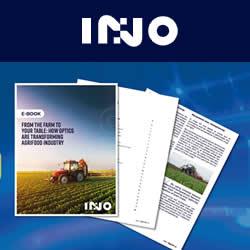Ag-Tech Developer Challenge Launches with Cash Prizes Calling Remote-Sensing, AI and UAV* companies to Support Cocoa Farmers Globally
Acclaimed expert competition judges include Ed Parsons, Geospatial Technologist of Google; Kim Frankovich, Vice President of Cocoa Sustainability of Mars Inc.; Farouk Nyame, Technical Manager of the Cartography Unit in the Ghana Cocoa Board; and Daan de Vries, Chief Innovation and Technology Officer of the Rainforest Alliance.
January 24, 2019, NEW YORK - Smallholder farmers produce the majority of the world's cocoa. While demand for cocoa is higher than ever, these farmers face persistent poverty, due in part to declining yields, low cocoa prices, and ever-mounting threats from climate-related pests and plant diseases.
Unfortunately, very few farmers receive timely information, training, or coaching and most lack financial means that could help overcome these challenges.
Technology, however, can offer a powerful and scalable solution—and that's why the Rainforest Alliance, Grameen Foundation, Touton, Satelligence and Waterwatch Projects created SAT4Farming, an initiative that employs digital technology and satellite imagery to create digital individualized Farm Development Plans (FDPs) that guide farmers over a seven-year period. And now, in order to make the FDPs even more precise—and to deliver FDPs to even more farmers—we announce the Ag-Tech Developer Challenge, a competition to create a remote sensing data product to support the mobile-enabled FDPs.
Acclaimed expert competition judges include Ed Parsons, Geospatial Technologist of Google; Kim Frankovich, Vice President of Cocoa Sustainability of Mars Inc.; Farouk Nyame, Technical Manager of the Cartography Unit in the Ghana Cocoa Board; and Daan de Vries, Chief Innovation and Technology Officer of the Rainforest Alliance.
A grand prize of €100,000 ($115,000) and another of €75,000 ($86,000) will be awarded for implementing the idea, but all ideas will be considered for possible future engagement by the Rainforest Alliance.
Currently, a field agent goes to each farm to collect and record information, whereas with remote sensing and upcoming AI technologies, the same information can be gathered much more quickly, cheaply, and precisely—and for more farmers. Remote sensing using satellite imagery, radar or drone images could be used to spot sickly trees. This example could transform the way FDPs are now created.
The SAT4Farming initiative aims to increase cocoa farmers' yields to 1500kg per year—triple the average for Ghanaian farmers, for example—through sustainable farming methods. Contest applicants will design their remote sensing product to be piloted with cocoa farmers in Ghana, where we envision reaching 30,000 farmers by the end of 2020. The remote sensing product eventually will be used for FDPs in other cocoa producing landscapes in Indonesia, Ivory Coast, Ecuador, and Nigeria as well, with the aim of reaching about 120,000 cocoa farmers globally.
About:
The Rainforest Alliance
The Rainforest Alliance works at the intersection of business, agriculture, and forests to make responsible business the new normal. We bring diverse allies together to address some of the most pressing social and environmental challenges of today. Our vision is a world where people and nature thrive in harmony. www.rainforest-alliance.org
Sat4Farming
SAT4Farming builds on a pilot in Indonesia where Mars Inc., the Rainforest Alliance, and Grameen Foundation partnered to create the digital FDP. It is based on a specialized agronomic model for cocoa that includes digital certification performance information. In Ghana, the integration of satellite imagery is expected to streamline the process of creating an FDP, facilitate monitoring, and provide greater insights into dynamic environmental conditions. https://www.rainforest-alliance.org/press-releases/digital-satellite-technology-program-launch-ghana
The Farm Development Plan
The Farm Development Plan (FDP) is a decision making and planning tool for smallholder cocoa farmers, and includes agronomic practices that they need to adopt as well as the financial investment needed to do so to increase their productivity to up to 1500 kg/hectare. In addition, it is a tool for field officers to assist cocoa farmers with increasing their productivity through monitoring, coaching, training and financial planning. The data required for the FDP is collected by field agents from large cocoa traders such as Touton and a process for doing is already in place.
Featured Product

